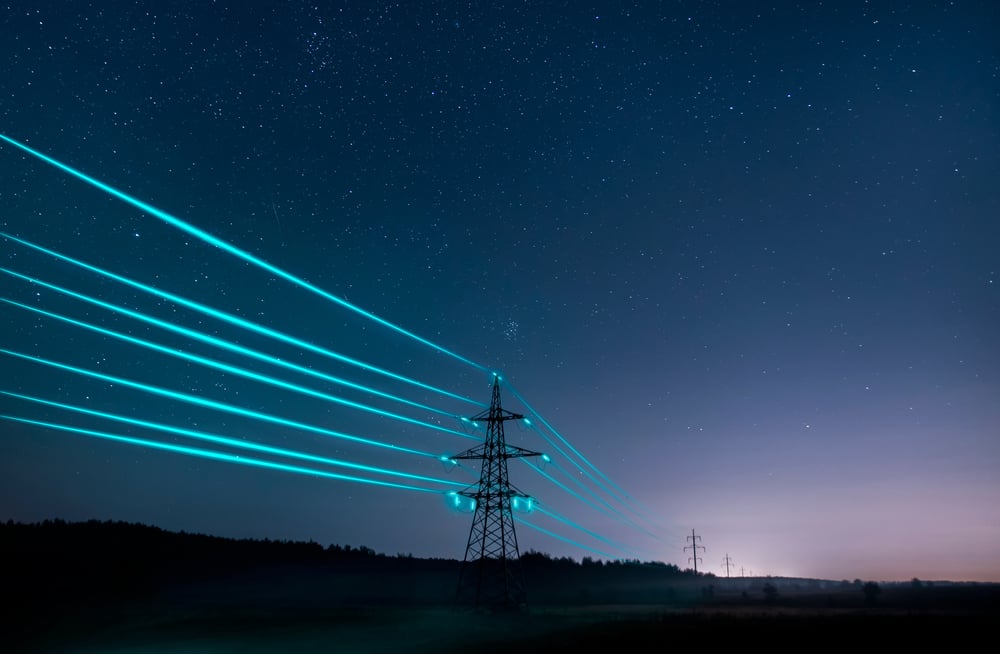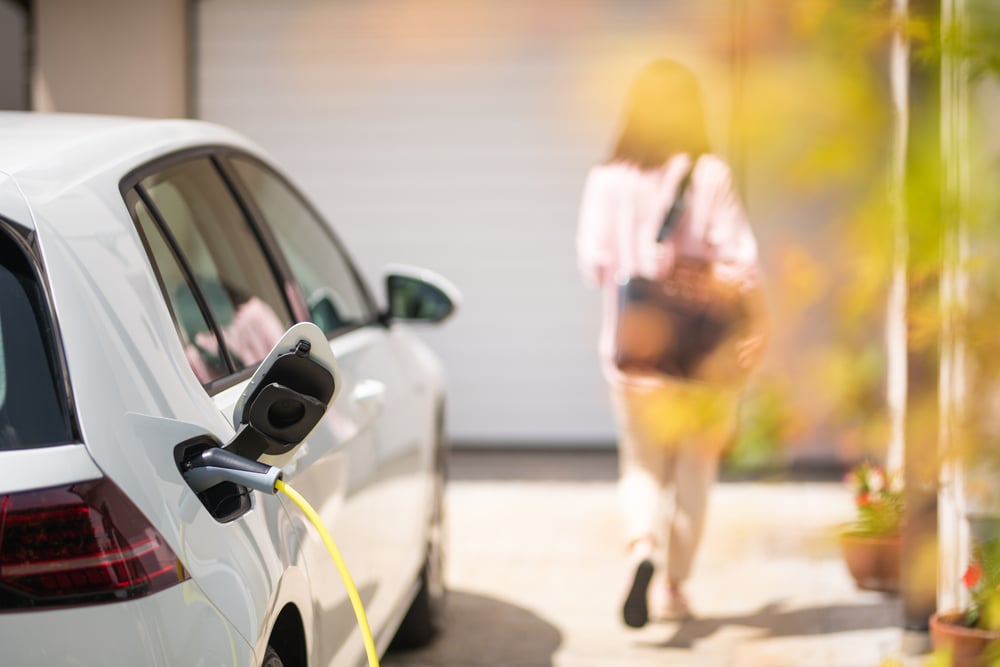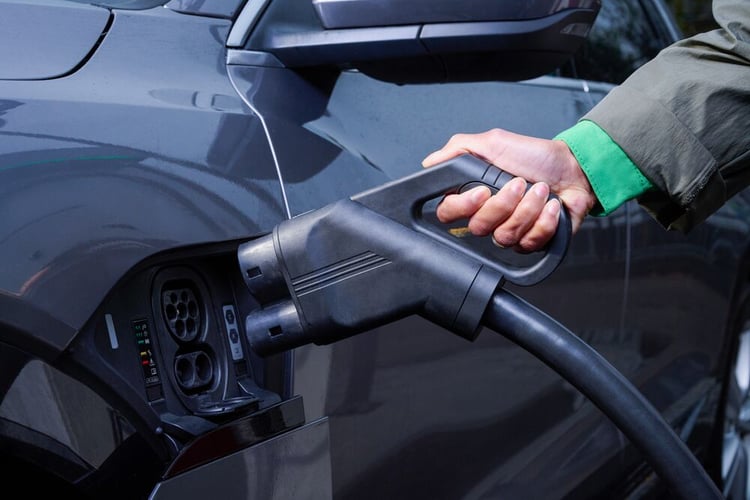.jpg?width=1600&name=shutterstock_1151250848%20(1).jpg)
Electric mobility is quickly on its way to becoming the new norm, and every day more drivers are making the switch to driving electric. Based on our research, the vast majority of EV drivers love the convenience of charging their car at home which makes it no surprise that more people are interested in the possibilities of smart EV charging.
While today’s popularity of the electric car is undeniable, its battery is still seen as more of a liability than it is an asset. But, what if the battery in your car didn’t just use up power, but could also be used as storage and become a source to draw energy from. This is what’s possible with smart charging features that are currently in development: vehicle-to-grid (V2G) and vehicle-to-home (V2H).
These new technologies hold much promise as they have the potential to overhaul the way our electricity grid works and how we use our vehicles. But there are also lots of unknowns. This article will explain what exactly the vehicle-to-grid and vehicle-to-home smart features are, and how homeowners could benefit from it.
What is vehicle-to-grid (V2G)?
A statistic that is often-overlooked is that on average a car only spends 4% of its time being driven. In other words, cars are parked 96% of the time, spending the majority of their time sitting around unused.
This is where vehicle-to-grid comes into play. Unlike internal combustion engine (ICE) cars, EVs have a large battery that can store a significant amount of energy. So, what if you could use that battery to store energy from the grid and provide additional power to balance out fluctuations in energy use?
Vehicle-to-grid (V2G) unlocks EV battery storage by enabling bidirectional charging between a vehicle and the grid. Put it simply, V2G allows an EV to temporarily deliver power back to the grid.
This is a great asset for energy providers who can use EV battery storage to meet peaks in electricity demand without having to increase electricity generation. It can also be a crucial tool for smoothing out the fluctuations in renewable energy generation by compensating for times when the sun doesn’t shine or the wind doesn’t blow.

Why is V2G tech important?
As electric mobility grows and evolves, the electricity grid will have to adapt to the exponential increase in the number of EVs that will need to be charged, both from individual consumers and commercial fleets. V2G helps to shift the load on grids by providing a temporary power reserve that can provide energy back into the grid to smooth peaks in demand.
Why should I let the grid operator use my EV as a source of power?
While grid operators can benefit from V2G, they are not the only ones. EV owners can gain from providing power back to the grid as well, in multiple ways.
For one, as an EV driver, you could benefit directly from incentives from your utility company or grid operators. For instance, you could be compensated for the energy you provide back into the grid, or get a discount on your electricity rates by using V2G.
Secondly, the more EV drivers that accept to supply power back into the grid, the easier it will be for grid operators to satisfy peaks in demand. This way, grid operators can minimise large investments into more powerful infrastructure and equipment, which, in turn, can help keep energy contracts affordable.
Is V2G cost-saving?
Yes, or at least it can be. In many countries, utility companies charge higher tariffs during peak hours when demand is higher and the utility company needs to increase electricity production. During these peaks, V2G could be a crucial tool in reducing the load on the grid by acting as a distributed storage solution, reducing the amount of electricity generation needed, and thus, electricity costs.

Is V2G available now?
You may be wondering then, if V2G has such good potential, is it already available? The answer is no, at least not widely. So far, most V2G installations are still in the pilot phase, or are small-scale projects designed to power a venue or facility. Still, interest in the new technology has grown rapidly in recent years and there are currently 103 ongoing V2G projects in 24 different countries.
Stand-out examples include the Johan Cruijff Arena in Amsterdam, home to AFC Ajax, which enables its visitors to actively contribute to the power supply of the arena with their EVs, by intelligently integrating their cars into the stadium’s power grid.
Another collaboration by Nissan and Imperial College London highlighted the possibility of reducing CO2 emissions by 243 grams per kilometre, and generating a yearly savings of up to £1,250 for EV drivers.
Standards to communicate and negotiate the energy flows between cars and charging stations have been released in 2022. This could accelerate the implementation of bi-directional charging. However, legislation and tax regulations are still in development and V2G is still a long way from mass adoption.
What is vehicle-to-home (V2H)?
The concept of vehicle-to-home (or V2H) is similar to vehicle-to-grid (V2G). The difference is, however, that with V2H, the energy is used to power a home instead of being delivered back to the grid. Vehicle-to-home gives homeowners control over their energy usage by allowing them to shift some of the power they use from the grid to off-peak times when energy prices are lower.
To illustrate this, consider a situation where you are at home, your electric car is charging in the driveway, and you are doing some chores in the house. You have many appliances turned on, and you are drawing a large amount of power from the grid. With V2H, you have the option to use some of the electricity stored in your EV to power your appliances, reducing the power used from the grid.
Once you are done and the appliances turned off, you can replenish your car’s battery with electricity from the grid at night, taking advantage of lower off-peak prices. This way, you can directly reduce your energy bill.
This can be extremely beneficial as peak demand in the average household is 3 to 4 kW. Generally speaking, you could potentially run the electric appliances in your home for 12 to 20 hours with the battery in your car.
Beyond saving money, V2H can also prevent overloads, by providing an additional source of power if your electricity demand exceeds the capacity that the grid can apply. It can also act as a backup source of energy in case of a blackout, allowing you to keep your home powered without a generator or storage battery.

Will my EV always be fully charged with V2H?
Understandably, one of the main concerns with V2H is your electric car’s battery level, as using it as a source of power drains some of the energy from the battery. As mentioned above, an EV sits unused most of the time. As such, there is a large part of the day during which your car can provide power without you even noticing.
For instance, suppose that you come home from work in the evening and won’t leave the house until the following day. You could easily use your EV to provide power to your home during the evening and only start charging after, say, midnight. With current charging speeds, you would still wake up to a full battery.
This is without even mentioning that the large majority of daily commutes are for shorter than a modern EV’s range, meaning that you would likely not need a full battery every day regardless.
V2H and storing renewable energy from solar panels
Vehicle-to-home can improve your home’s energy use even more if you generate your own power, for example, by using solar panels. On their own, solar panels only generate electricity when the sun shines, which may not be during the times when you are consuming the most. For instance, you may use more electricity in the evening when making dinner, after the sun has set.
With vehicle-to-home, you can store the renewable energy you generate by using it to charge your EV during the day, and then use some of that power at night to meet your electricity needs. In this way, your car powers your house at night, and you don’t need to buy—or can buy less—electricity from your supplier.
Of course, you can always set a threshold battery level to ensure your EV maintains sufficient charge for the next day and never uses more power than you want for your home.

Is V2H available now?
Not really, but it’s getting there and some manufacturers have started offering it. For example, the Ford F-150 Lightning and the Nissan Leaf (in Australia).
However, the bidirectional charging features of the above-mentioned examples only work with their models, charging stations, and software. Regulatory challenges and the lack of standard bidirectional EV charging protocols and connector types affect the rollout. This is currently in development, and, if we had to guess, we expect V2H to be widely available within the next 3-5 years.
Are V2G and V2H safe for the battery?
An important concern with any battery, but especially the one in EVs, is their longevity. Understandably, drivers want their vehicles to last them many years, a crucial aspect of which is battery performance.
Like many other components, an EV’s battery gets worn out with use: with every charging cycle, the battery degrades ever so slightly, which, over time, can reduce the amount of energy it can hold, and thus, the car’s range.
However, the rate at which this happens is incredibly low—an EV’s battery capacity loss is estimated to be just about 2.3% per year. This means that an EV with 150 miles of initial range will only lose about 17 miles of accessible range after five years of use.
In practice, keeping a battery fully charged and unused for a long time is worse for its longevity than regular, everyday use. This is why most manufacturers recommended keeping the battery level 20% and 80% to maintain optional efficiency.
Small charges and discharges, such as those done through vehicle-to-grid technology, are also less damaging to the battery than driving. This is because the power intensity arising when driving an EV heats the battery more than a lower and constant load from charging and discharging it, and the heat is one of the main factors of battery degradation.
Two studies have confirmed this, analysing an EV’s battery degradation when providing power back to the grid using V2G. They found that using an intelligent algorithm that controlled charging, no significant additional loss in battery occurred to typical driving.
What is the difference between V2X, V2G, V2H, and V2B?
Next to V2G and V2H, you may have heard other acronyms such as V2X, V2I, V2P, or V2B. Before your mind explodes, lots of the acronyms don’t have anything to do with charging. To clear up confusion, we explain below what each of them means.
Vehicle-to-everything (V2X) is a term used to describe the general concept of a vehicle connected to its surrounding environment. Besides the electricity storage aspect, V2X is generally related to a connection system that enhances driving safety. In that sense, it includes many declensions.

For example, vehicle-to-infrastructure (V2I) is the communication between a vehicle and the surrounding infrastructure, such as traffic lights and road signs.
Vehicle-to-pedestrian (V2P) and vehicle-to-vehicle (V2V) refer to the communication between a vehicle and a pedestrian or other vehicles, respectively.
Going back to the electricity exchange aspect, vehicle-to-building (V2B) relates to the exchange of electricity between a vehicle and building, similar to V2H but a business or workplace instead.
What does the future hold?
While V2G technology is still in its early stages, it may become an essential EV charging feature, owing to its many benefits both grid operators and EV drivers. As the number of EVs on the road rises, societies around the world will need to find ways to efficiently manage electricity use and satisfy growing demand.
For homeowners, vehicle-to-home (V2H) will allow easy management of the electricity flow in their homes, gaining independence from grid operators. V2H will also facilitate sustainable energy production, enabling the efficient storage and use of renewable power by a house.
.jpg?width=640&name=shutterstock_1565456593%20(1).jpg)
Vehicle-to-grid technology is only one of several smart charging features which allow users to manage their EV’s charging session and control the electrical load within a house intelligently. To learn more about smart EV charging and its various features, read our in-depth article on the topic.
Related articles

Is DC fast charging bad for your EV battery?
While there is research that shows that frequent rapid (DC) charging can somewhat degrade the battery quicker than AC...

5 things you didn't know about EV batteries
There’s little doubt that electric mobility is the future. Electric vehicle (EV) sales have skyrocketed in the past few...

Electric car battery weight explained
How much an electric vehicle (EV) battery weighs depends greatly on the vehicle and model. On average, however, EV...